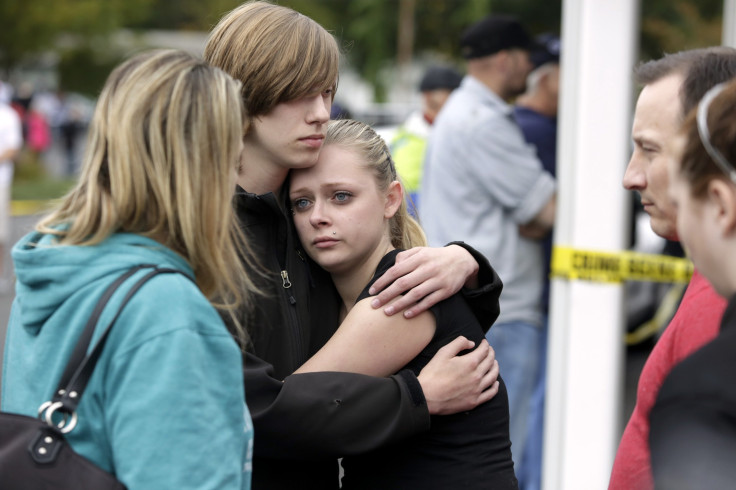Marysville-Pilchuck High School Shooting: As Washington Students Return, Psychologists Discuss Recovery Techniques

Marysville-Pilchuck High students told reporters it felt “good to be back” at school for the first time since the Oct. 24 shooting that left four teenagers dead and two in critical condition. As they walked into the school Monday morning among police officers and alumni, students received hot chocolate, doughnuts, roses, cheers and lots of hugs, the Seattle Times reported.
But life at the Washington state school isn't expected to return to normal for some time. Helping people – especially young students – recover from a school tragedy is a delicate and complex process, experts said. Not even history can tell Marysville-Pilchuck what to do.
In general, the key to helping high schoolers heal from crises is realizing that they need individualized responses, said Dr. Robin Gurwitch, a psychologist at Duke University’s Center for Child and Family Health in North Carolina. “If everybody broke their arm, we’d know to put them all in casts and they’d be good to go in six to eight weeks,” Gurwitch told International Business Times. “Events like this unfortunately don’t follow that sort of pattern.”
Some students may experience survivor guilt, while others may feel anxiety at school, said Connecticut psychologist Dr. Elaine Ducharme. The triggers are different for every student, but Marysville-Pilchuck has taken action. The sight of the cafeteria where 15-year-old Jaylen Fryberg shot his friends and himself may cause panic, so the school closed the cafeteria and was considering remodeling it. “If they can eat somewhere without those memories, for now that’s a very good thing,” Ducharme told IBTimes. Others may be traumatized by the sound of the fire alarm that went off to alert students to evacuate, so the district developed plans to change the tone.
Avoiding the scene of the shooting was a key part of Sandy Hook Elementary School students’ return to class. The Connecticut school moved seven miles away after 20 children and six adults were murdered in 2012. Volunteers worked to make the classrooms look just as they were before the shooting, even putting crayons on desks in the positions students left them, Yahoo! News reported.
Emphasizing routine promotes recovery, Ducharme said. Children also take comfort in action, so allowing students to channel their emotions into concrete projects can help, as well. After the 2012 shooting at Chardon High School in Ohio that killed three students, the community created the Chardon Healing Fund. Whether it’s a fundraiser, memorial or card-writing session, Ducharme said, students should set goals as a way to work through tragedy.
“Is this something kids are going to get over? No, we never get over a loss,” Gurwitch said. “But we find ways to get through it. We find ways to take that next step.”
Some people who have experienced school shootings develop post-traumatic stress disorder symptoms, psychology professor and trauma expert Russell Thomas Jones told IBTimes. But while 60 to 80 percent of adults will experience extremely negative life events, he said, only 8 to 15 percent are likely to develop PTSD. A few months later, there’s a drop in diagnosis.
Jones worked with Virginia Tech students after the 2007 massacre there left 32 dead. In those cases and others, he said, exposure therapy was effective because it allowed people to relive and make sense of the event. Other techniques that typically help students include exercising, deep breathing, talking to family members, serving on school safety committees or writing feelings in a journal.
All three experts agreed on one thing: With time and counseling, Marysville-Pilchuck High School will recover. “Most of these folks are going to be quite resilient and are going to be able to move forward,” Jones said.
© Copyright IBTimes 2024. All rights reserved.






















